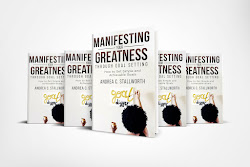Let’s be real, interviews can be intimidating, especially when you’re trying to secure a role that aligns with your purpose, peace, and paycheck. Over the years, I’ve learned how to navigate interviews and workplace culture with confidence, clarity, and discernment. I’ve been on both sides of the table, interviewing for roles and interviewing others, and one thing’s for sure: people remember how you make them feel.
Here are some of my go-to gems for walking into and out of every interview like the blessing you are.
1. Preparation is your superpower.
Before you even log into Zoom or walk into the room, research the organization. Know their mission, their values, and how the role contributes to their goals. Come ready with at least three thoughtful questions, not just to impress them, but to make sure they align with you.
2. Your non-verbal communication speaks first.
Before you say a word, your body language tells your story. Practice eye contact because it shows security and confidence. Keep your posture strong but relaxed. Don’t cross your arms (closed energy). Instead, use open hand gestures and a warm smile.
3. Dress to win, even virtually.
Whether you’re interviewing in person or on Zoom, how you present yourself matters. Dress professionally, but let your personality shine through. Keep your background clean with minimal distractions, and if it’s virtual, log in 10 minutes early. Show up calm, prepared, and centered in your greatness.
4. Don’t just answer, connect.
When they ask about your experience, connect your answers to the impact you made, not just the tasks you did. Use your stories to show your leadership, emotional intelligence, and problem-solving skills. Employers don’t just want to know what you did, they want to know how you did it and why it mattered.
5. Pay attention to their energy, too.
You’re not the only one being interviewed. Watch the panel’s body language. Are they engaged, warm, and present, or do they seem drained and dismissive? You can tell a lot about a workplace by how people show up in interviews.
If the interviewer looks exhausted, unorganized, or rude, that’s your sign. You deserve to work somewhere that values balance and respect.
6. Know your worth, and speak it.
Let’s stop lowballing ourselves. You’ve spent years building your experience, education, and professionalism. Say your salary number with your whole chest and don’t blink.
When negotiating, remember, it’s not just about the money. Ask about flexibility, hybrid schedules, vacation time, and professional development. These things add up to a healthy, fulfilling work life.
7. Keep your brand clean and consistent.
Do a quick Google search on your name. Make sure your LinkedIn reflects your current skills, achievements, and personality. Hiring managers look, trust me. Your brand should say: I’m credible, confident, and consistent.
8. Follow up and stand out.
After your interview, send a short, genuine thank-you email. Most people don’t do this, and it’s one of the simplest ways to leave a lasting impression.
9. Remember, you’re interviewing them too.
You are not desperate, you’re discerning. Ask yourself, does this environment feel peaceful or performative? Supportive or draining? If it doesn’t align with who you are and what you value, keep it moving.
10. Always show up as your authentic self.
Stop trying to perform or fit into boxes. You’ve already done the work, gained the experience, and earned your seat at the table. The healed, confident version of you doesn’t chase, overexplain, or overextend; she enforces boundaries, trusts her intuition, and protects her peace like it’s holy ground.
Final Word
You’ve got the skills to pay the bills. You don’t need another degree; you need courage, clarity, and strategy. The workplace is evolving, and so are you. Walk, act, and know that you’re the blessing.

















